Very few other birders visit our favorite birding patch, mostly because it is only accessible via private or posted land. Trails in the patch itself are open but there are restrictions against use of motorized vehicles, overnight camping and open fires. There are no Internet bulletins alerting us to unusual finds. Although we have seen some birds that are uncommon, we have reported only one or two truly unusual species from this location.

We walk the same old local patch, morning after morning. Often we are there before the sun rises and may walk and watch for two or more hours. We see the same old resident birds, and the same old migrants visit or stay for the winter. Our expectations are not high. If we set out to see a specific less common species, more than likely we will fail in our quest.
Yet we are open to discovery. We notice the incremental changes-- the rise and ebb of water levels in the wetlands, the flowering and the fruiting, destruction and sometimes restoration. We have grown accustomed to all the snags and rocks and shadows that look like distant birds and mammals, and we notice the new garbage bag or the out-of-place shadow that may be a fox, or a Bobcat. We are always alert for non-avian subjects.
During the past seven years of walking this patch nearly every morning we have found 135 species of birds, recorded since 2009 in our eBird List of Species, West Miramar Water Conservation Area. Most of these we documented among over 5700 photographs on FLICKR for this site alone.
Interestingly, some of these we have seen only once or twice. Despite our regular observations of this area, we have been there only a tiny fraction of all the daylight (and none of the nighttime) hours over the past nine years since first setting foot there. Statistically, our records are insignificant. How many birds have we missed just by minutes or days or years?
On a still morning the slight rustling in a shrub, easy to overlook, revealed the first Orange-crowned Warbler we ever saw in the patch, though once we learned where to look for them we have seen several more.
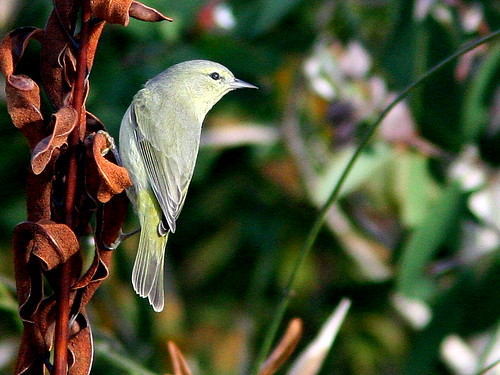
The stirring of a single blade of grass invited us to find our first Rough Green Snake, wet from the morning dew. It responded to my approach by retreating across a sandy patch and rearing up towards me like a tiny cobra.

A flash of yellow color in the brush disappeared as suddenly as it appeared, and a lucky photo documented our first and only Yellow-breased Chat. Uncommon but not rare, our patch must have been visited by many more chats besides this one so fortuitously sighted.

A shy and retiring Black-whiskered Vireo showed itself during only one of our hundreds of visits to this particular thicket. How many times had it been there when I was otherwise occupied?
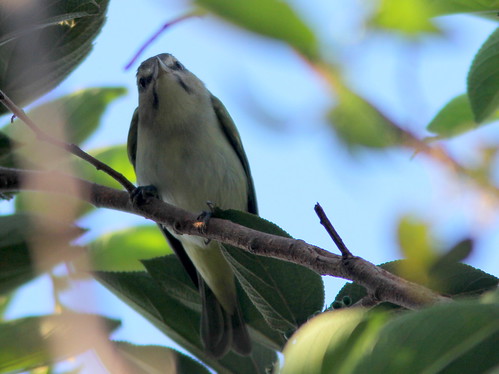
A dull-plumaged Bell's Vireo presented an identification challenge. We have seen it only twice, in October of 2009 and 2012.
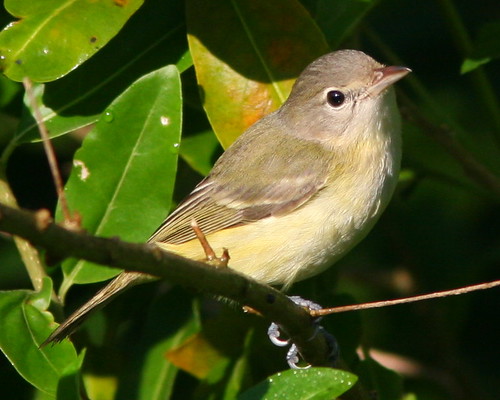
Short-tailed Hawks flew over only twice. This is the more common dark morph, seen this past October. I wonder how many I missed by not scrutinizing the vulture flocks which help disguise them from their usual prey of small birds.

This dissimilar light morph was the first Short-tailed Hawk on my life list of species first seen (and photographed).
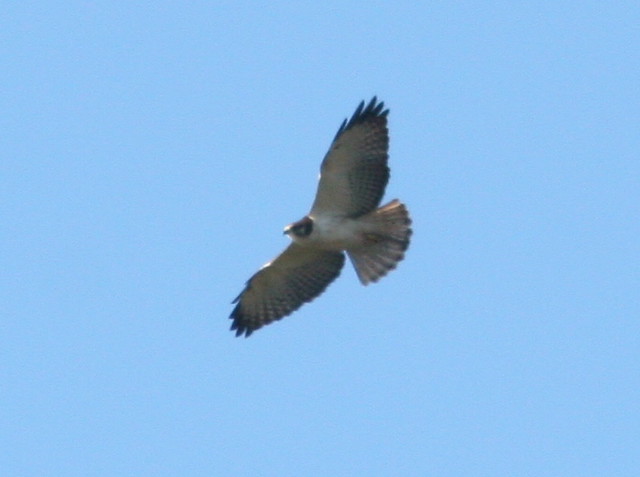
A few more spectacular birds have shown up on only one occasion. They include a small flock of Roseate Spoonbills that appeared in late November, 2012 and stayed for three weeks.


Remarkably, the spoonbills were joined by our first and only flock of White Pelicans, a species that also lingered for several days. Neither species has reappeared since.
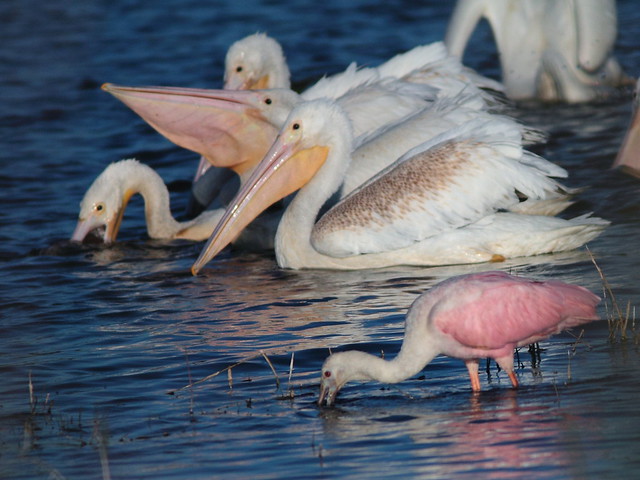
Reddish Egrets are rarely seen away from the coastal brackish waters, yet a single immature bird visited us,18 miles inland, and lingered for over a month. As is typical, it pranced about erratically in search of prey.

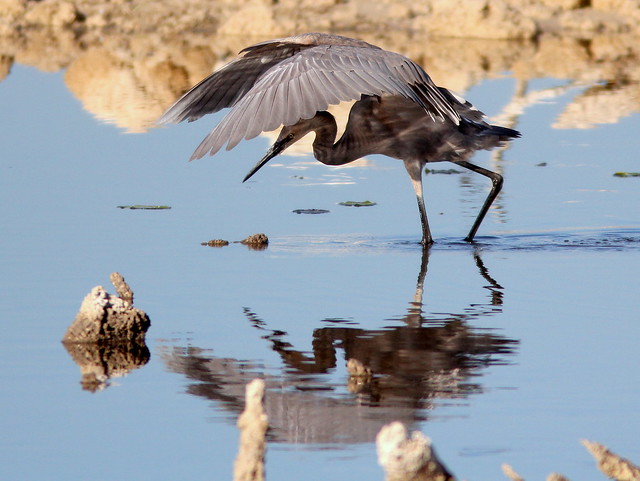
The highlights among rare visitors were two Whooping Cranes, the first ever reported this far south in Florida. They were captive-reared in Wisconsin and released to migrate on their own. One injured its foot and had to be treated and rehabilitated and was released in Tennessee. The other lacked survival skills and was relocated to a ranch in central Florida. Sadly, both perished during the winter.
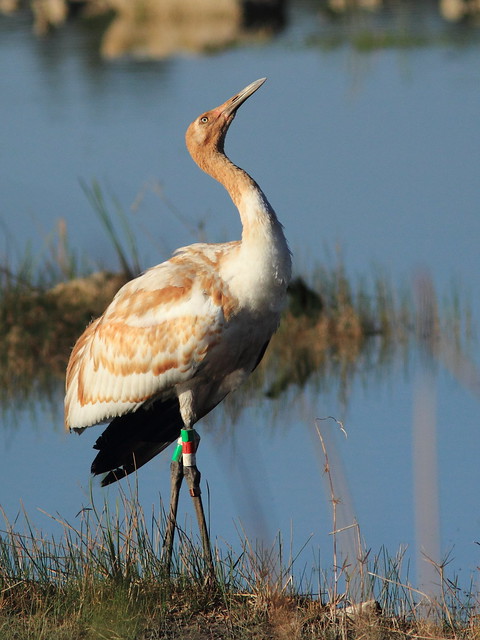
If this video does not display, please visit this link:
http://www.youtube.com/watch?v=FeKMkfJOlco&featu
No comments:
Post a Comment
Thank you for visiting Rosyfinch Ramblings! I will enjoy a visit to your page just as soon as possible. Some anonymous comments and some containing active links may not be accepted.